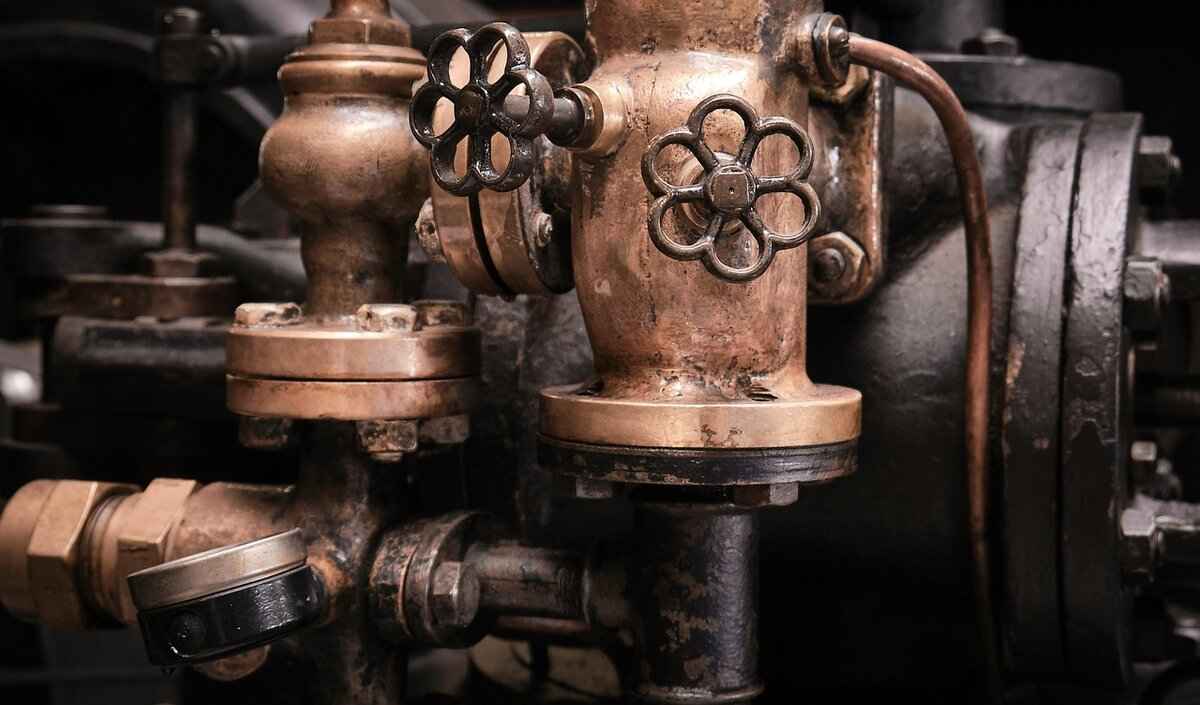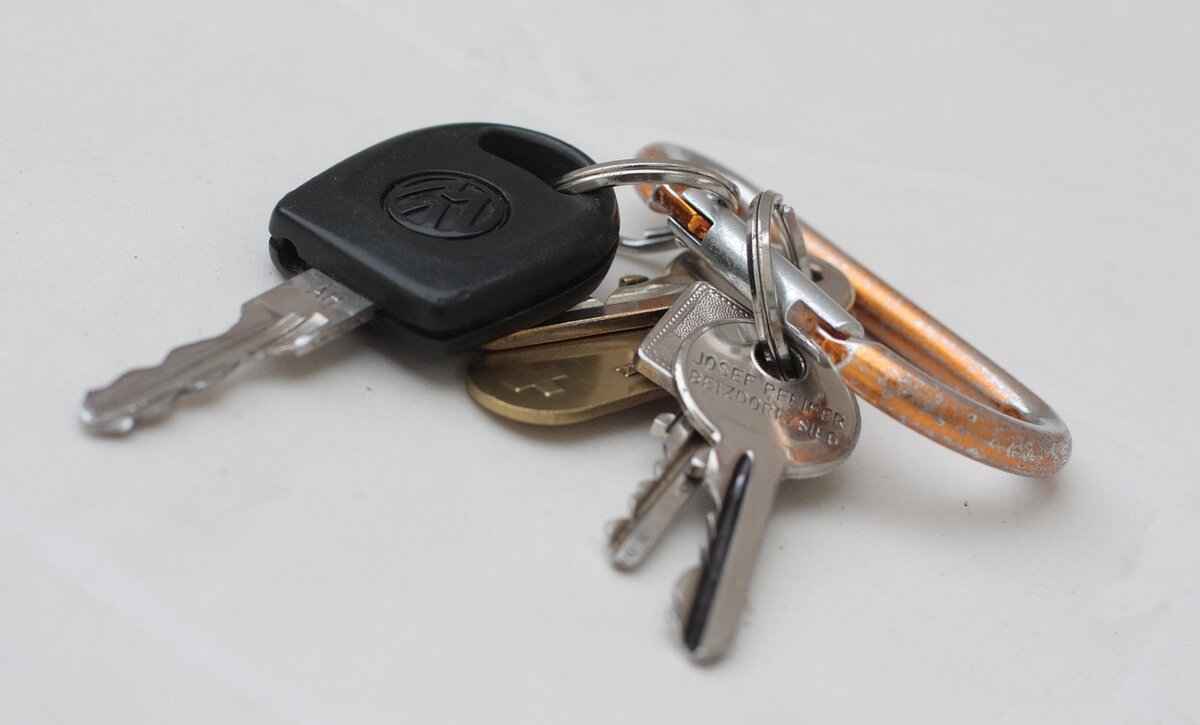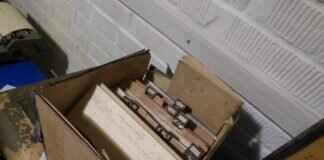This article serves as a complete guide to checking the timing of a Type 1 VW Bug, a critical aspect for ensuring optimal engine performance and longevity. By following these detailed steps, you will gain the skills to make precise timing adjustments like a professional.
Understanding the Importance of Timing
Timing is an essential factor in your VW Bug’s engine performance. It dictates when the spark plugs ignite the fuel-air mixture, which directly impacts power output and fuel efficiency. If the timing is off, the engine may experience knocking, reduced power, or even stalling. Thus, maintaining the correct timing not only enhances performance but also prolongs the lifespan of your engine.
Gathering the Necessary Tools
Before diving into the timing check, it’s crucial to gather the right tools. Here’s a list of what you’ll need:
- Timing Light: Essential for measuring the timing accurately.
- Wrench Set: For loosening and adjusting the distributor.
- Screwdriver: To access certain engine components.
- Feeler Gauge: Useful for checking spark plug gaps.
Having these tools at hand will make your timing check smoother and more efficient.
Locating the Timing Marks
To adjust the timing accurately, you must first locate the timing marks on your engine. Typically, these marks are found on the crankshaft pulley and the engine case. Familiarizing yourself with their locations is vital for proper alignment during timing checks. Make sure to clean the area around the timing marks to ensure clear visibility.
Setting Up the Engine for Timing Check
Proper setup of the engine is crucial for an accurate timing check. Start by ensuring the engine is at its operating temperature. This is important because the timing can vary when the engine is cold. Additionally, make sure the engine is in the correct position, usually at top dead center (TDC) for cylinder number one, to get accurate readings.
Using a Timing Light
A timing light is a vital tool for checking timing. To use it effectively, connect the timing light to the battery and attach the inductive pickup to the number one spark plug wire. When you rev the engine, the light will flash, allowing you to see the timing marks through the timing window. Understanding how to interpret these flashes will enable you to make necessary adjustments confidently.
Adjusting the Timing
Once you have your timing light set up, you may need to adjust the timing. This involves loosening the distributor hold-down bolt and gently rotating the distributor until the timing mark aligns with the specified degree on the scale. Be cautious, as even a small adjustment can significantly affect engine performance.
Common Timing Issues and Solutions
During timing checks, various issues can arise. Misalignment is a common problem that can lead to incorrect readings. If you notice that the timing marks are not aligning as they should, double-check your setup and ensure that the engine is at TDC. Additionally, if the engine is running poorly post-adjustment, it may indicate that the timing is still not correct and may require further tweaking.
Understanding the Different Timing Specifications
Different models of the Type 1 VW Bug may have unique timing specifications. It is essential to familiarize yourself with these specifications based on your model year and engine type. Consult your owner’s manual or reliable online resources to ensure you are working with the correct timing settings for your specific vehicle.
Testing Engine Performance After Timing Adjustment
After making your timing adjustments, it is crucial to test the engine’s performance. A quick test drive can help you observe any changes in power delivery and overall engine responsiveness. Listen for any unusual sounds and monitor the engine’s temperature to ensure everything is functioning smoothly.
Maintaining Your VW Bug for Optimal Timing
Regular maintenance is key to keeping your VW Bug’s timing in check. Schedule routine inspections and adjustments to prevent timing-related issues from arising. This proactive approach can significantly extend the life of your engine and enhance its performance.
When to Seek Professional Help
While many enthusiasts can check and adjust timing themselves, some situations may require professional assistance. If you encounter persistent issues or feel unsure about the adjustments, it’s wise to consult a mechanic. They can provide expert insights and ensure that your engine runs smoothly.
Conclusion: Mastering Timing for Enhanced VW Bug Performance
Mastering the timing of your Type 1 VW Bug is essential for optimal performance. With practice and the right knowledge, you can ensure your engine runs efficiently for years to come.

Understanding the Importance of Timing
Timing is a critical aspect of engine performance, particularly in vehicles like the Type 1 VW Bug. It refers to the precise moment when spark plugs ignite the fuel-air mixture within the engine’s cylinders. When timing is set correctly, it leads to an optimal combustion process, which is essential for maximizing both power and efficiency.
The ignition timing affects several key performance factors. First and foremost, it influences the **engine’s power output**. If the timing is too advanced, the spark plug ignites the fuel-air mixture too early, leading to a phenomenon known as “knocking.” This can cause significant damage to the engine over time. Conversely, if the timing is too retarded, the ignition occurs too late, resulting in incomplete combustion. This not only reduces power but can also increase fuel consumption, leading to a less efficient engine.
Moreover, proper timing is vital for **fuel efficiency**. A well-timed engine burns fuel more completely, which means you get more power from less fuel. This is particularly important for vintage vehicles like the Type 1 VW Bug, where owners often seek to maintain the original performance specifications while also being mindful of fuel consumption.
Another critical aspect of timing is its impact on **emissions**. Engines that are not timed correctly can produce higher levels of harmful emissions, making it difficult for the vehicle to pass emissions tests. This is especially relevant in regions with strict environmental regulations. By ensuring that the timing is set accurately, you can contribute to a cleaner environment while also keeping your vehicle compliant with local laws.
Furthermore, understanding timing can help you identify other potential issues within the engine. For instance, if you notice a drop in performance or an increase in fuel consumption, checking the timing should be one of your first troubleshooting steps. It’s a straightforward process that can save you from more extensive repairs down the line.
In summary, understanding the importance of timing in your Type 1 VW Bug is essential for achieving optimal engine performance. It maximizes power, enhances fuel efficiency, reduces emissions, and can even help you diagnose other engine issues. By paying attention to this critical element, you not only keep your vehicle running smoothly but also extend its lifespan, ensuring that you can enjoy the classic driving experience for years to come.

Gathering the Necessary Tools
Before embarking on the journey of checking the timing on your Type 1 VW Bug, it is imperative to gather the necessary tools. Having the right equipment not only streamlines the process but also enhances accuracy, ensuring your engine runs optimally. Below is a comprehensive list of tools you will need, along with their importance in the timing check process.
- Timing Light: This is the most crucial tool for checking the timing of your engine. A timing light allows you to see the timing marks on the crankshaft pulley and the engine case, helping you determine if your ignition timing is set correctly.
- Wrench Set: A good set of wrenches, including both standard and metric sizes, is essential. You will need these to loosen and tighten the distributor hold-down bolt when making timing adjustments.
- Screwdriver: A flathead screwdriver is often required to adjust the points in the distributor if your VW Bug is equipped with a points ignition system. Even if you have an electronic ignition, a screwdriver may still be useful for various tasks.
- Feeler Gauge: If your VW Bug has points, a feeler gauge is necessary to measure the gap between the ignition points. Proper gap settings are crucial for accurate timing and engine performance.
- Socket Set: In addition to wrenches, a socket set can be helpful for removing or adjusting components that may obstruct access to the timing marks or the distributor.
- Vacuum Gauge: While not strictly necessary for timing checks, a vacuum gauge can assist in diagnosing engine performance issues that may be related to timing, such as idle quality and acceleration.
- Notebook and Pen: Keeping a record of your findings and adjustments is invaluable. Documenting your settings can help you track changes over time and understand how adjustments affect engine performance.
Preparation is Key
Before you start, ensure that your workspace is clean and organized. Having everything within arm’s reach will prevent unnecessary interruptions during the timing process. Additionally, consider wearing safety glasses to protect your eyes from any debris or accidental spills.
Safety First
Always remember to prioritize safety when working on your vehicle. Make sure the engine is off and cool before starting any work. If you need to run the engine for timing checks, ensure that you have a helper to monitor safety and assist with the timing light.
In summary, gathering the right tools is a fundamental step in checking the timing of your Type 1 VW Bug. Each tool serves a specific purpose that contributes to a successful timing check. By being well-prepared, you can ensure a smoother process and achieve accurate results, ultimately leading to improved engine performance and longevity.

Locating the Timing Marks
Locating the timing marks on your Type 1 VW Bug is a crucial step in ensuring your engine runs smoothly and efficiently. These marks serve as reference points for making precise timing adjustments, which can significantly impact engine performance. Understanding their location and how to use them effectively will empower you to make the necessary adjustments with confidence.
Where to Find the Timing Marks
The timing marks on a Type 1 VW Bug are typically located on the crankshaft pulley and the engine case. The crankshaft pulley has a series of notches or markings, while the engine case features a fixed reference point. These two elements work together to indicate the correct timing for the ignition system. Familiarizing yourself with their positions is essential for accurate timing checks.
Identifying the Marks
To identify the timing marks, start by cleaning the crankshaft pulley and the engine case area. Dirt and grease can obscure the marks, making it difficult to see them clearly. Once clean, look for the following:
- The top dead center (TDC) mark, which is usually a single line or notch on the crankshaft pulley.
- Additional timing marks that indicate degrees of advance or retardation, often labeled in degrees (e.g., 5° BTDC).
- A corresponding mark on the engine case that aligns with the TDC mark when the engine is at the correct position.
Using the Timing Marks for Adjustments
Once you have located the timing marks, the next step is to ensure the engine is at the appropriate operating temperature. This is critical for accurate timing checks. With the engine running, use a timing light to illuminate the marks. The light will help you see the alignment between the crankshaft pulley and the engine case mark.
To adjust the timing, you may need to loosen the distributor clamp. Rotate the distributor slightly until the timing marks align correctly. This process can require some finesse, as even small adjustments can impact engine performance significantly. After making adjustments, always double-check the alignment to confirm accuracy.
Common Mistakes to Avoid
While locating the timing marks seems straightforward, there are common pitfalls to avoid:
- Not cleaning the area thoroughly, which can lead to misreading the marks.
- Failing to ensure the engine is at the proper temperature before checking timing.
- Over-tightening the distributor clamp, which can cause misalignment during adjustments.
By being aware of these common mistakes, you can ensure a smoother timing adjustment process. Remember, taking the time to locate and understand the timing marks properly will pay off in the long run, as it leads to better engine performance and longevity.
In conclusion, mastering the skill of locating and utilizing the timing marks on your Type 1 VW Bug is essential for optimal engine performance. With practice and attention to detail, you can confidently make timing adjustments that enhance your vehicle’s efficiency and power.

Setting Up the Engine for Timing Check
When it comes to checking the timing on a Type 1 VW Bug, the setup of the engine is a crucial step that should not be overlooked. Proper setup ensures that the timing checks are accurate and that the engine performs optimally. Here are the key steps to ensure your engine is ready for timing adjustments.
- Achieve Operating Temperature: Before you begin any timing check, it’s essential to allow the engine to reach its operating temperature. This is because the engine components expand when heated, which can affect the timing readings. Start the engine and let it run for at least 10 to 15 minutes to ensure it is adequately warmed up.
- Position the Engine Correctly: The engine should be positioned at the correct timing mark for the check. For a Type 1 VW Bug, this typically means aligning the crankshaft to the TDC (Top Dead Center) mark on the pulley. You can do this by rotating the engine using a wrench on the crankshaft nut until the mark is visible in the timing window.
- Check the Distributor Position: The distributor plays a crucial role in timing. Ensure that the rotor is pointing towards the number one cylinder when the engine is at TDC. This alignment is vital for accurate timing adjustments.
- Secure All Components: Make sure that all components, such as the distributor cap and any vacuum hoses, are securely in place. Loose components can lead to inaccurate readings and affect engine performance.
- Inspect the Timing Marks: Familiarize yourself with the timing marks on the pulley and the engine case. These marks are essential for making adjustments and knowing what the timing should be set to. A clean timing scale will help you read the timing accurately.
By following these steps, you can ensure that your engine is properly set up for timing checks. This preparation is vital for achieving the best performance from your Type 1 VW Bug. Once the engine is at operating temperature and positioned correctly, you can proceed with using a timing light to check and adjust the timing as necessary.
Remember, taking the time to set up your engine correctly can save you from future headaches and ensure your VW Bug runs smoothly. Proper timing not only improves performance but also enhances fuel efficiency and prolongs engine life.

Using a Timing Light
A timing light is an indispensable tool for anyone looking to ensure optimal engine performance, especially in classic vehicles like the Type 1 VW Bug. This device allows you to check the ignition timing accurately, which is crucial for the engine’s efficiency and longevity. Understanding how to use a timing light effectively can make a significant difference in the performance of your vehicle.
What is a Timing Light?A timing light is an electronic tool that flashes a light in sync with the ignition spark of the engine. This flash allows you to observe the timing marks on the crankshaft pulley or flywheel while the engine is running. By doing this, you can determine if the ignition timing is set correctly according to the manufacturer’s specifications.
Steps to Use a Timing LightTo use a timing light effectively, follow these steps:
- Connect the Timing Light: Attach the timing light’s leads to the battery and the number one spark plug wire. Ensure that the connections are secure to avoid any interruptions during the timing check.
- Start the Engine: With the timing light connected, start your engine and let it reach its normal operating temperature. This step is crucial as timing can vary with engine temperature.
- Point the Timing Light: Aim the timing light at the timing marks on the crankshaft pulley. The light will flash in sync with the ignition spark, illuminating the timing marks.
- Read the Timing Marks: Observe where the timing mark aligns with the scale on the engine. If the mark is aligned with the specified degree, your timing is set correctly. If not, adjustments may be necessary.
Adjusting Timing with a Timing LightIf your timing is not within the recommended range, adjustments are needed. To do this, you will typically loosen the distributor clamp and rotate the distributor slightly. After making adjustments, recheck the timing with the timing light to ensure it aligns with the specifications.
Common Mistakes to AvoidWhen using a timing light, several common mistakes can lead to inaccurate readings:
- Incorrect Connections: Ensure that the timing light is connected to the correct spark plug wire and the battery to avoid faulty readings.
- Engine Not at Operating Temperature: Timing can change as the engine warms up, so always check timing after the engine has reached its normal operating temperature.
- Inaccurate Timing Marks: Make sure you are looking at the correct timing marks for your specific model of VW Bug, as variations can exist.
ConclusionUsing a timing light is a straightforward process that can greatly enhance your understanding of your engine’s performance. By following the steps outlined above, you can ensure that your Type 1 VW Bug runs smoothly and efficiently. Regularly checking and adjusting your timing can lead to improved fuel efficiency, better engine performance, and a longer lifespan for your vehicle. Mastering the use of a timing light will empower you to take control of your car’s maintenance, ensuring that it remains a reliable classic for years to come.

Adjusting the Timing
Adjusting the timing on your Type 1 VW Bug is a crucial step in ensuring your engine runs smoothly and efficiently. Once you have your timing light properly set up, the next step involves making adjustments to the timing itself. This process can seem daunting, but with the right approach, it can be performed with ease.
First, it’s essential to **understand the role of the distributor** in the timing adjustment process. The distributor is responsible for directing the electrical current from the ignition coil to the correct cylinder at the precise moment. This timing is critical; if it’s off, you may experience poor engine performance, increased emissions, or even engine knocking.
To begin adjusting the timing, follow these steps:
- Loosen the Distributor Hold-Down Bolt: Using a wrench, carefully loosen the bolt that secures the distributor in place. Be cautious not to completely remove the bolt, as you need it to remain attached while you make adjustments.
- Rotate the Distributor: With the bolt loosened, gently rotate the distributor. Turning it clockwise will typically advance the timing, while turning it counterclockwise will retard the timing. Make small adjustments, as even slight movements can significantly impact performance.
- Check Timing with the Timing Light: After making an adjustment, use your timing light to check the timing marks. You should see a clear alignment with the specified timing mark on the engine. If the timing is still not correct, continue to make small adjustments until you achieve the desired setting.
- Tighten the Distributor: Once you have the timing correctly set, securely tighten the distributor hold-down bolt. This ensures that your adjustments remain intact during engine operation.
It’s important to note that timing specifications can vary between different models of the Type 1 VW Bug. Always refer to your vehicle’s manual for the specific timing settings. Additionally, environmental factors such as altitude and fuel type can also affect timing.
After making your adjustments, it’s advisable to take your VW Bug for a test drive. Pay attention to how the engine responds; a well-timed engine should run smoothly, accelerate without hesitation, and exhibit no unusual noises. If you notice any issues, you may need to revisit your timing settings.
In conclusion, adjusting the timing on your Type 1 VW Bug is a straightforward process that can greatly enhance your vehicle’s performance. By following these steps and taking the time to ensure accuracy, you can keep your engine running optimally for years to come. Regular timing checks and adjustments are key components of maintaining your VW Bug, ensuring it remains a reliable and enjoyable vehicle.

Common Timing Issues and Solutions
Timing checks are essential for the optimal performance of your Type 1 VW Bug, but they can sometimes lead to complications. Understanding the common timing issues and their solutions is crucial for any car enthusiast looking to maintain their vehicle effectively. In this section, we will explore various problems that may arise during timing checks, along with practical solutions to address them.
One of the most prevalent issues during timing checks is the misalignment of timing marks. This can occur due to improper setup or movement of the engine components over time. If the timing marks do not align correctly, it can lead to incorrect timing settings, adversely affecting engine performance.
- Solution: Always ensure that the engine is at the correct position before checking the timing. Rotate the engine manually to align the marks accurately. Double-check the alignment by using a timing light to confirm that the marks are visible and correctly positioned.
Another common issue is obtaining incorrect timing readings. This can result from a faulty timing light, poor connections, or incorrect RPM settings. If the readings are not accurate, adjustments made will not yield the desired outcomes.
- Solution: Inspect the timing light for any defects and ensure that all connections are secure. Additionally, verify that the engine is running at the correct RPM specified for your VW Bug model. If necessary, use a second timing light to cross-check readings.
Worn or damaged components, such as the distributor or ignition system, can also lead to timing issues. If these parts are not functioning correctly, they can throw off the timing settings, leading to poor engine performance.
- Solution: Regularly inspect the distributor cap, rotor, and ignition wires for wear and tear. Replace any damaged components to ensure optimal performance. Keeping these parts in good condition can prevent timing discrepancies.
Environmental factors such as temperature and altitude can also impact timing checks. Higher altitudes may require adjustments to the timing settings due to changes in air density, while extreme temperatures can affect engine performance.
- Solution: Be aware of your local environment when making timing adjustments. Consult your vehicle’s manual for specific recommendations related to altitude and temperature changes, and adjust the timing accordingly.
Finally, failing to monitor changes after making timing adjustments can lead to ongoing issues. It’s essential to test the engine’s performance post-adjustment to ensure everything is functioning correctly.
- Solution: After adjusting the timing, take your VW Bug for a test drive. Monitor the engine’s response, listen for unusual sounds, and check for any warning lights. If issues persist, revisit your timing settings and make further adjustments as necessary.
By being aware of these common timing issues and their solutions, you can effectively troubleshoot and resolve problems that may arise during timing checks. This proactive approach will not only enhance your VW Bug’s performance but also extend its lifespan.

Understanding the Different Timing Specifications
When it comes to the iconic Type 1 VW Bug, one of the most critical aspects of maintaining optimal engine performance is understanding the different timing specifications that apply to various models. Each model year may have slight variations in timing settings, which can significantly impact how the engine runs. Therefore, familiarizing yourself with these differences is not just beneficial; it is essential for accurate adjustments and long-term reliability.
The timing specification indicates the precise moment when the spark plugs ignite the air-fuel mixture in the combustion chamber. This timing is crucial for achieving maximum power and efficiency. In general, the timing for the Type 1 VW Bug can range from 5 to 30 degrees before top dead center (BTDC), depending on the engine model and year. For instance, earlier models may require a timing setting closer to 5-7 BTDC, while later models with improved engine technology might operate optimally at around 30 BTDC.
To effectively adjust the timing, it is important to consult the specific owner’s manual or a reliable resource that details the timing specifications for your particular model. This is crucial because using the wrong timing setting can lead to a host of issues, including poor fuel economy, reduced power, and even engine damage. Here are some key factors to consider:
- Model Year: Different years may have different specifications due to changes in engine design.
- Engine Type: Variants like the dual-port or single-port engines may have different timing requirements.
- Fuel Type: The octane rating of the fuel you are using can influence the optimal timing setting.
Additionally, environmental factors such as altitude and temperature can affect engine performance and, subsequently, the timing adjustment. For example, engines operating at higher altitudes may require a different timing setting than those at sea level to compensate for the thinner air.
Once you have identified the correct timing specification for your model, the next step is to accurately check and adjust the timing. This involves using a timing light and ensuring that the engine is warmed up and running smoothly. If you find that your timing is off, adjustments can be made by loosening the distributor clamp and rotating it until the timing light indicates the correct setting.
In summary, understanding the different timing specifications for the Type 1 VW Bug is crucial for anyone looking to maintain or restore these classic vehicles. By paying close attention to the model year, engine type, and external factors, you can ensure that your timing adjustments lead to optimal engine performance, longevity, and driving enjoyment.

Testing Engine Performance After Timing Adjustment
After you have made the necessary timing adjustments on your Type 1 VW Bug, the next crucial step is to assess the engine’s performance. This phase is not merely a formality; it is essential for ensuring that your adjustments have had the desired effect. A comprehensive test drive allows you to evaluate how well the engine responds and whether any additional issues need to be addressed.
- Initial Start-Up: Begin by starting the engine and allowing it to idle for a few minutes. Listen for any irregular sounds, such as knocking or pinging, which could indicate that the timing is still off.
- Acceleration Test: Once the engine is warmed up, take your VW Bug for a short drive. Pay attention to how the engine responds during acceleration. A well-timed engine should deliver smooth and responsive power without hesitation.
- Monitoring Performance: During your drive, monitor the overall performance of the vehicle. Note how it handles various driving conditions, such as uphill climbs or rapid stops. If you notice any stuttering or loss of power, it may suggest that further adjustments are necessary.
- Fuel Efficiency: After the test drive, consider checking your fuel consumption. Improved timing can lead to better fuel efficiency, so keep an eye on your fuel gauge over the next few days to see if there’s a noticeable difference.
- Diagnostic Tools: If available, use diagnostic tools to check for any error codes or performance issues. These tools can provide insights into any underlying problems that may not be immediately apparent during a test drive.
Common Issues to Look For
While testing your engine, be vigilant for common issues that might arise even after timing adjustments. These can include:
- Misfiring or rough idling- Excessive exhaust smoke- Overheating- Unusual vibrations
If you encounter any of these problems, it may indicate that further timing adjustments or other maintenance tasks are required.
Final Thoughts
In conclusion, testing the engine performance after timing adjustments is a critical step in the maintenance of your Type 1 VW Bug. By conducting a thorough evaluation through a test drive, you can ensure that your vehicle runs smoothly and efficiently. If issues persist despite your adjustments, it may be wise to consult a professional mechanic for a more in-depth analysis. Regular testing and maintenance will not only enhance your driving experience but also prolong the life of your beloved VW Bug.

Maintaining Your VW Bug for Optimal Timing
Regular maintenance is essential for keeping your VW Bug’s timing in check. A well-maintained engine not only performs better but also has a longer lifespan. This section will delve into the importance of routine checks, adjustments, and the specific steps you can take to ensure your VW Bug runs smoothly.- Routine Inspections: Regular inspections of your VW Bug’s engine components can help identify timing issues before they escalate. Check for signs of wear and tear, such as frayed belts or loose connections, which could affect timing.
- Timing Adjustments: Adjusting the timing is crucial for optimal engine performance. Over time, the timing may drift due to various factors like engine wear. Regular adjustments can help maintain the correct timing, ensuring that the spark plugs ignite the fuel-air mixture at the right moment.
- Oil Changes: Regular oil changes are vital for engine health. Clean oil reduces friction and helps components operate smoothly, contributing to better timing accuracy. Aim to change your oil every 3,000 to 5,000 miles, depending on your driving habits and the type of oil used.
- Fuel Quality: Using high-quality fuel can significantly impact engine performance. Poor fuel quality can lead to incomplete combustion, affecting timing. Always choose fuel from reputable sources to ensure your engine operates efficiently.
- Spark Plug Maintenance: Spark plugs play a crucial role in the timing process. Regularly inspect and replace spark plugs as needed to ensure they are firing correctly. Worn or dirty plugs can lead to timing issues and reduced engine performance.
Furthermore, keeping your ignition system in good condition is vital. A malfunctioning ignition system can lead to timing problems, resulting in poor engine performance and increased emissions. Regularly check the ignition coil, distributor cap, and rotor for signs of wear.
It’s also important to consider environmental factors that might affect your VW Bug’s performance. Extreme temperatures, humidity, and even altitude can influence engine timing. Therefore, if you frequently drive in varying conditions, be prepared to make adjustments accordingly.
In addition to these maintenance tips, it’s advisable to keep a detailed log of your maintenance activities. This log can help you track when adjustments were made, which can be invaluable for identifying patterns or recurring issues.
Finally, if you’re unsure about performing maintenance yourself, consider seeking professional help. A qualified mechanic can provide a thorough inspection and make necessary adjustments to ensure your VW Bug operates at its best.
In summary, regular maintenance is crucial for optimal timing in your VW Bug. By conducting routine inspections, making timely adjustments, and keeping track of your maintenance activities, you can enhance your engine’s performance and longevity.

When to Seek Professional Help
While many enthusiasts enjoy the hands-on experience of working on their Type 1 VW Bug, there are instances when seeking professional assistance becomes essential. Understanding these situations can not only save you time but also prevent costly mistakes that could lead to more significant engine issues down the line.
- Complex Timing Adjustments: If you find that your engine timing adjustments are beyond basic tweaks, it may be wise to consult a professional. Experienced mechanics have the expertise to diagnose complex timing issues that can arise from wear and tear or modifications.
- Unusual Engine Behavior: If your VW Bug exhibits symptoms such as backfiring, stalling, or poor acceleration, these could be signs of timing problems. A professional can conduct a thorough inspection to pinpoint the root cause and provide effective solutions.
- Lack of Proper Tools: Not everyone has access to specialized tools like a timing light or advanced diagnostic equipment. If you lack the necessary tools or experience, a professional mechanic can ensure that your timing is checked and adjusted correctly.
- Time Constraints: Sometimes, the demands of daily life can make it challenging to dedicate time to check or adjust the timing yourself. In such cases, a professional can efficiently handle the task, allowing you to focus on other responsibilities.
- Warranty Considerations: If your VW Bug is still under warranty, performing timing adjustments yourself could void your coverage. It’s advisable to consult with a certified mechanic to ensure that your vehicle remains protected.
- After Major Repairs: If your engine has undergone significant repairs or modifications, it’s prudent to have a professional check the timing. Changes in engine components can affect timing settings and performance.
In summary, while many DIY enthusiasts can handle basic timing checks, recognizing when to seek professional help is crucial for maintaining your Type 1 VW Bug’s performance. A professional mechanic can provide the expertise and tools necessary to ensure your engine runs smoothly and efficiently. Investing in professional assistance when needed can ultimately save you time, money, and frustration, allowing you to enjoy your classic VW Bug without worries.

Conclusion: Mastering Timing for Enhanced VW Bug Performance
Mastering the timing of your Type 1 VW Bug is essential for optimal performance. With practice and the right knowledge, you can ensure your engine runs efficiently for years to come. This guide will provide you with the necessary steps and insights to check and adjust the timing of your VW Bug like a pro.
Timing is a critical aspect of your VW Bug’s engine performance. It refers to the precise moment when the spark plugs ignite the fuel-air mixture in the cylinders. If the timing is off, your engine may experience poor fuel efficiency, reduced power, and increased emissions. Proper timing ensures that your engine operates smoothly, maximizing both performance and longevity.
Before diving into checking the timing, it’s crucial to have the right tools on hand. Here’s a list of necessary equipment:
- Timing light
- Wrench set
- Screwdriver
- Feeler gauge
- Owner’s manual for timing specifications
Having these tools ready will make the timing process much smoother and more accurate.
Timing marks on your Type 1 VW Bug are essential for making accurate adjustments. Typically, these marks are located on the crankshaft pulley and the engine case. Familiarizing yourself with their locations will streamline the timing process, allowing you to align the engine correctly when performing checks.
Proper engine setup is vital for accurate timing checks. Ensure your engine is at operating temperature, as this provides the most reliable readings. Additionally, make sure the vehicle is on a level surface and in a safe position to work on.
A timing light is a critical tool for checking the timing of your VW Bug. To use it effectively, connect the timing light to the battery and the number one spark plug wire. When the engine is running, the light will flash, illuminating the timing marks. This will allow you to determine if adjustments are necessary.
If the timing is not within the specified range, adjustments will need to be made. This involves loosening the distributor clamp and rotating the distributor body while observing the timing marks. Make small adjustments and recheck until the timing is set correctly.
Timing checks can present various issues, such as misalignment or incorrect readings. Common problems include:
- Distributor not seated properly
- Faulty timing light
- Incorrect timing mark alignment
Identifying these issues early can save you time and prevent potential engine damage.
Different models of the Type 1 VW Bug may have varying timing specifications. It’s essential to consult your owner’s manual or a reliable source to ensure you’re adjusting to the correct settings. This knowledge is crucial for achieving optimal performance.
Once you’ve made the necessary adjustments, it’s important to test your engine’s performance. A test drive will help you assess improvements, such as smoother acceleration and better fuel economy. If issues persist, further adjustments may be required.
Regular maintenance is key to keeping your VW Bug’s timing in check. Routine checks and necessary adjustments can prolong engine life and performance. Make it a habit to inspect your timing regularly, especially if you notice changes in engine performance.
While many enthusiasts can check timing themselves, some situations warrant professional assistance. If you’re unsure about making adjustments or encounter persistent issues, consulting a qualified mechanic can prevent costly mistakes and ensure your engine runs smoothly.
Frequently Asked Questions
- What tools do I need to check the timing on my Type 1 VW Bug?
To check the timing, you’ll need a timing light, a wrench set, and a screwdriver. These tools will help you make accurate adjustments and ensure your engine runs smoothly.
- How do I locate the timing marks on my VW Bug?
The timing marks are typically found on the crankshaft pulley and the engine case. Familiarizing yourself with their location is essential for making precise timing adjustments.
- What should I do if I encounter timing issues?
If you notice misalignment or incorrect readings, double-check your setup and ensure the engine is at operating temperature. If problems persist, consider consulting a professional mechanic.
- How can I test my engine performance after adjusting the timing?
After making timing adjustments, take your VW Bug for a test drive. Pay attention to acceleration and any unusual noises, which can indicate whether further adjustments are needed.
- When should I seek professional help for timing adjustments?
If you feel unsure about the process or encounter persistent issues, it’s best to consult a professional. They can help you avoid costly mistakes and ensure your engine is in top shape.














